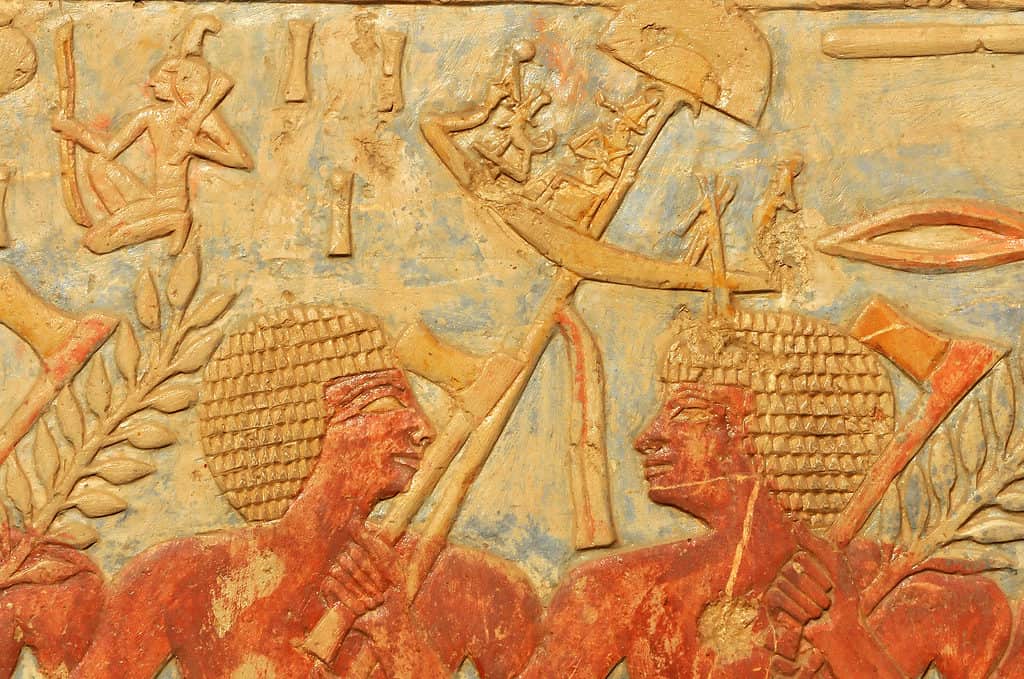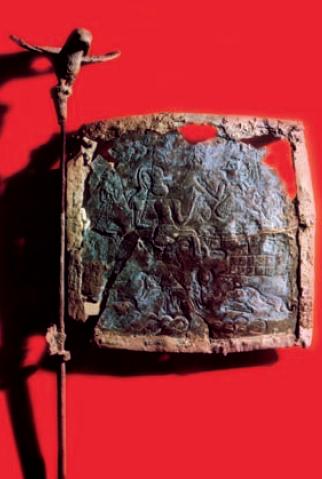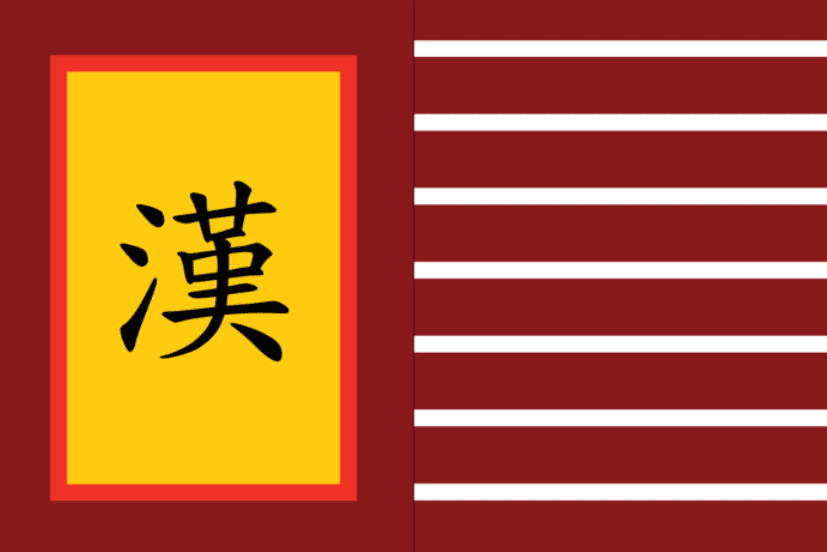Flags have been used around the world for centuries. Some have unified countries, and others have polarized them. Many have promoted nationalism, bolstered military states, or expanded empires. Few, though, have remained the symbol of a country or a territory for centuries at one time. As flags have been redesigned and reintroduced, many have been thrown away and forgotten. Remembering these lost flags is crucial to our perspective on history and antiquity. Discover some of the oldest flags in the world, many of which have been forgotten.
Origins of the Flag
Most attribute the creation of the flag to the region of present-day China. The founder of the Zhou dynasty used a white flag in his processions, and flags were also used in battle on chariots. Even the king or emperor had his own flag, which demonstrated royalty and respect for the crown. In India, flags were placed on chariots and elephants. Unlike many flags seen today, flags in India had a triangular shape and incorporated embroidery and fringe.
However, it is possible that the cloth flag derived from standards of ancient Egypt or Assyria. Standards were metal objects attached to poles that represented a regime. These poles included pictures of animals or people, sometimes in the form of hanging banners. Some animals included on ancient flags or standards include elephants, bulls, white tigers, and blue dragons. Each animal or picture on these flags held significance to the cultures of antiquity.
Eventually, the use of flags spread to countries practicing Islam and to Europe. Muslims altered flag designs to become more abstract. They believed that images that could be identified, such as an animal or a person, were a form of idolatry. To avoid this cardinal sin, Islam changed flag designs to include simple colors and shapes. Most Islamic flags included the colors red, black, and white.
European flags developed during the Medieval period and during the Renaissance. Most national flags were inspired by the flag of a country’s patron saint. The end of the Middle Ages brought about a host of flag designs that represented nations, rulers, and organizations. Some countries even had country or city flags.

The cloth flag may have derived from standards of ancient Egypt or Assyria which were metal objects attached to poles that represented a regime.
©mountainpix/Shutterstock.com
First Flag on Record
The oldest flag ever discovered was a bronze military standard dating back to 2400 B.C. The Derafsh, as it was called, was a flag-like bronze plate affixed to a metal pole. The plate depicted a man and a woman facing one another, seated and kneeling respectively. The flag was discovered in Shahdad, Iran, which is a city located in southeast central Iran. While the flag acts more as a standard than a typical cloth flag, it is impressive that a flag so old remained mostly intact for thousands of years.

The oldest flag ever discovered was a bronze military standard dating back to 2400 B.C called Derafsh.
©Alborzagros, public domain, via Wikimedia Commons – License
Ancient Flags
While many countries and empires have used flags for millennium, several of these ancient flags have been forgotten as power has shifted and as flags have been redesigned. However, recognizing and remembering these flags is both a way of understanding history and of discovering the influences that have shaped countries’ flags as they are seen and known today. Below describe some flags of ancient civilizations.
Ancient Rome
While many picture the flag of ancient Rome as depicting a red background, an eagle, and the letters “SPQR,” the Romans didn’t use a typical cloth flag. Rather, military standards and banners, like those of ancient Egypt, were used to represent the empire and promote the military. After all, Rome was a conquering military state, so standards were often used to identify troops. Animal symbols like the serpent and the eagle represented honor and acted as a spiritual connection between soldiers and the state. The military was like a religion for many participating soldiers, and these symbols helped to exemplify their loyalty to the state.
Furthermore, the letters “SPQR” stood for Senatus Populusque Romanus, which means Senate and the People of Rome. The acronym signified both the government and the citizens of Rome. Thus, the military found a deeper connection to the common people by carrying these letters. In their own way, fighting for the state and upholding military policies allowed soldiers to represent the voice of the people on and off the battlefield.

Ancient Rome used military standards often with an eagle representing courage and strength.
©angellodeco/Shutterstock.com
Japan
One of Japan’s first flags is a military flag dating back to the 13th century. The flag is slender and rectangular with three rectangular teeth on its right side. The flag is red and features a golden yellow circle on its left side. Although this flag was used in battle, it is not considered the first national flag of the country.
The Tokugawa Shogunate is considered one of Japan’s first flags. The flag is rectangular with a white background and a black stripe in its center. While this might be the first well-known flag of Japan, it represented Japan’s final feudal military government. Although a host of other territorial flags were introduced into Japan, the Japanese flag as it is known today trumped these renditions with its introduction in 1868.
China
There is no shortage of historical flags of China. In fact, flags and standards of China have changed from dynasty to dynasty for millennium. China’s oldest flag, though, dates back to 1500 B.C. The flag includes a white background with a red horizontal banner lining the top of the flag. The banner has a forked tongue on its rightmost side. Below the banner lie several horizontal blue lines, bordered by a red rectangle with a yellow outline.
Following this flag, several dynasty flags were introduced. Each dynasty flag is unique in its coloring and symbolism. For instance, the Han dynasty pictures a burgundy background, white horizontal lines, a yellow rectangle with a red border, and a Chinese symbol in black. On the other hand, the early Qing dynasty flag depicts a blue dragon on a yellow background surrounded by skinny flame-like shapes. Overall, ancient Chinese flags have shifted drastically overtime, even into the postmodern period of history.

The Han Dynasty flag pictured a burgundy background, white horizontal lines, a yellow rectangle with a red border, and a Chinese symbol.
©Patrikmati, CC BY-SA 4.0 <https://creativecommons.org/licenses/by-sa/4.0>, via Wikimedia Commons – License
Egypt
Ancient Egypt mainly used standards as a way of representing their country. These standards included animal symbols or shapes atop metal poles. Eventually, though, Egypt adopted the usage of cloth flags. One of Egypt’s first flags was introduced in 632. The flag is simple in nature, as it includes a black background without any other colors or symbols. After the Umayyads took over the Egyptian empire, the black flag was changed to plain white.
Until 1341, Egypt used single-colored flags of white, black, green, and yellow. Red was introduced to the Egyptian flag in 1517 with the rise of the Ottoman empire. Ottoman Egypt had a rectangular red flag with a white crescent and a white star in the center. Egyptian flags incorporated the white crescent moon and white stars until 1971. The current flag of Egypt was introduced in 1984 and includes stripes of red, white, and black and a centered golden eagle.
United States 9/11 Flag
Although this flag may not be ancient, it represents a story of disappearance. After the 9/11 attacks on the World Trade Centers in 2001, three firefighters in New York City put up an American flag above the debris. This action led to one of the most iconic photos in United States history. However, the flag that was displayed soon disappeared, and only one man knew where it had gone.
Brian Browne, a flag collector of Everett, Washington, unknowingly kept the 9/11 flag stored in his home for eight years. Three years after the attacks, a widow brought an assortment of flags and other military equipment to Washington state. Although conjecture, many believe that the woman’s husband had worked for New York City before his death. After exchanging through an array of hands in Washington, the flag eventually arrived at Browne’s residence.
The flag was given to Browne in a plastic bag labeled “9/11/2001,” but he did not know its significance. After viewing a documentary describing the lost 9/11 flag, Browne believed that the flag he had held for so long was likely the missing flag. He returned it to New York City, and forensics confirmed that his flag was the missing 9/11 flag. Luckily, media and Browne’s passion for flag collection allowed what could have become a forgotten token to be restored and kept by New York City once and for all.
Up Next
- 10 Countries with Blue and White Flags, All Listed
- The Flag of Egypt: History, Meaning, and Symbolism
- Countries with Striped Flags
The photo featured at the top of this post is © iStock.com/Stock Ninja Studio
Sources
- Britannica, Available here: https://www.britannica.com/topic/flag-heraldry
- Wikipedia, Available here: https://en.wikipedia.org/wiki/Flag#:~:text=While%20the%20origin%20of%20the,2400%20BCE
- Maria Milani Ancient Roman History, Available here: https://mariamilani.com/ancient_rome/ancient_roman_flag.htm
- World History, Available here: https://www.worldhistory.org/Roman_Standard/
- Flagmakers, Available here: https://flagmakers.co.uk/
- Wikipedia, Available here: https://commons.wikimedia.org/wiki/Historical_flags
- CNN, Available here: https://www.cnn.com/2016/09/28/us/ground-zero-flag-returns/index.html
FAQs (Frequently Asked Questions)
What is the oldest flag ever discovered?
The oldest flag ever discovered is a bronze military standard found in Shahdad, Iran. The flag dates back to 2400 B.C.
Where were flags first developed?
Flags were likely first developed in the region of present-day China.
What is a standard?
A standard is an ancient flag-like structure that includes a banner or metal image affixed to a metal pole.
Thank you for reading! Have some feedback for us? Contact the AZ Animals editorial team.






